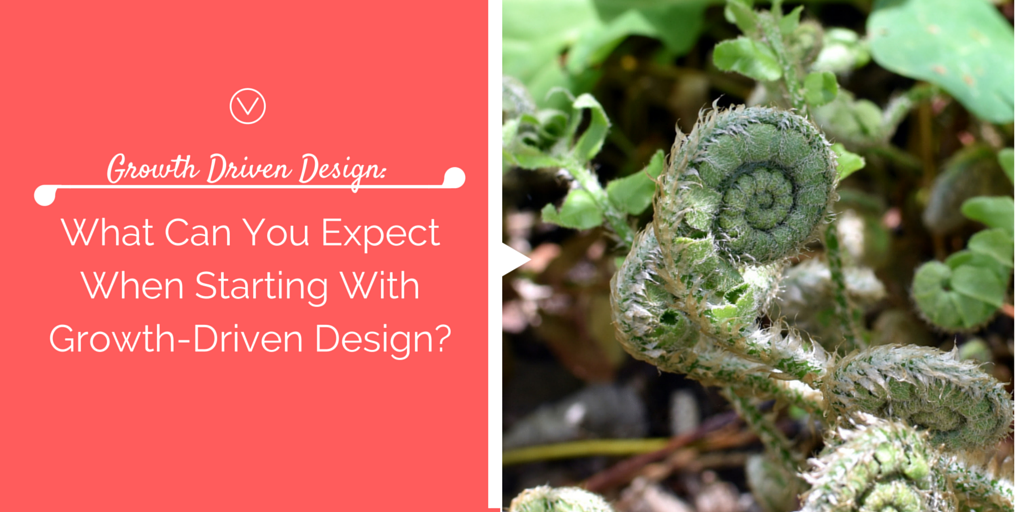Confessions Of A Web Designer: Your New Website Will Fail - And Here's Why!
Ouch, that probably hurt! I know, the last sort of news you want to hear right now is that your brand spanking new website is going to fail. Unfortunately, I am not over-dramatic here. You are probably thinking at this point that I am out of my mind - but bear with me, I promise, it will all make sense.
I've developed enough websites to know that if they are only built around the business, rather than the user, they will fall short regarding performance and user experience. This, in turn, will stunt your website's contribution to lead generation and its potential as a business development asset which will lead to negative repercussions on your bottom line!
And there is a simple reason for it! To illustrate, let me tell you a story about Mary.
A Website Redesign Can Be Frustrating
Mary is the Director of Marketing at a medium-sized software company here in New Jersey. She just spent the last six months cooped up with web designers, web developers, graphic designers, content writers, and much of her marketing department, carefully crafting her company's beautiful new website that was supposed to support her team's inbound marketing efforts.
Mary was so sick of all the late hours approving wireframe designs, website texts, and images. She was done with sitting in countless briefings and, of course, the ever-changing scope, and therefore the ever-increasing costs. (BTW: The average SMB website redesign costs somewhere between $15,000-$80,000 - so the investment was significant.)
She couldn't wait for this all to be over!
Finally, the website was launched two months ago (which was eight weeks late), and Mary had big hopes. She read on a marketing blog that typically sites get redesigned every 2-3 years, so she wouldn't have to touch the website for another 24 months or so until the next redesign would have to happen.
All that work would pay off, right?
Wrong!
While the new website saw an initial bump in website traffic, leads started to trickle in much slower than expected. The phones weren't ringing off the hook and Mary got concerned. Something was wrong.
Now, while Mary's story is made up, it does tell a very typical story of a website redesign project and the frustrations that come with it. I have heard the same story more times than I can count.
So what exactly is the problem?
The Traditional Web Design Process Is Broken
The problem with the traditional approach to website redesign is three-fold:
- It is hard to scope beforehand - so it ends up often out-of-scope, late to launch and over budget.
- It happens in a bubble - completely separate from the user.
- Once launched, the website will not undergo further refinement until the next redesign.
So, let's take these three problems apart in more detail.
Hard-to-Scope
A lot of redesign discussions start with defining what the business is about, what services are being offered, how it sells and what features/functions (e.g., e-commerce shopping cart, donate button, event page) need to be included/redesigned/built. Then the website strategy team will do an audit of the current website and content audit, come up with a suggested information architecture and start wireframing to present some initial designs.
But a lot of times, only once you opened Pandora's box, you know what you are in for.
For example, the simple e-commerce shopping cart turns into a nightmare because the online shopping system now needs to integrate with the inventory management system because the management has decided that now would be a good time to do that - since the website is being resigned anyway. Or, the old blog that was to be imported did not have any featured images and hence does not display properly... the list goes on.
Separation From The User
Once the website contract is signed, all the initial briefing meetings are done and the wireframes are designed and approved, the web design and development team will work in a bubble, checking in periodically with the client for approval or feedback. However, the entire process is entirely designed around what the business, the business owner or specific people within the marketing department want. Most of the time, users are not consulted. Ever.
This goes for specific design elements (e.g., big hero images, sliders, videos, sidebars, etc.), the information structure (that is centered around the company's product or service offerings rather than around the user's challenges and pain points), all the way to the content offered.
So, any website built like that will always be the web designer's best guess of what will perform best, not what has proven to perform.
No Further Improvements Until Next Redesign
Since most websites are redesigned every at a minimum every 2-3 years, including a three-month cycle of the redesign, there isn't much improvement in between these cycles other than the occasional content update. So, now you are stuck with an under-performing website for another 2.5 years, right?
But thankfully, there is a better way! It is called Growth-Driven Design.
Up Next: A Deep Dive Into Growth-Driven Design
In the next few weeks we are going to explore the ins and outs of Growth-Driven Design: the processes, the costs, the pros and cons, who is a good fit and who is not, and what to look out for in an web design agency if you are thinking of embarking on the exciting GDD journey.
If you cannot wait for that, feel free to download the "Introduction to Growth-Driven Design".
Share this
You May Also Like
These Related Stories

What Can You Expect When Starting With Growth-Driven Design?

Change or Die: Why Innovative Companies Embrace SCRUM For Peak-Performing Websites

.png?width=250&height=125&name=TrustBuilderLogoWhiteTranspBackgr(250x125%20px).png)



No Comments Yet
Let us know what you think